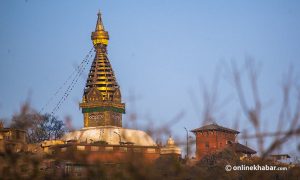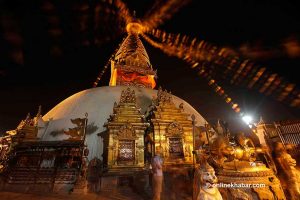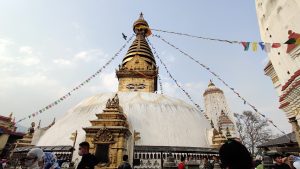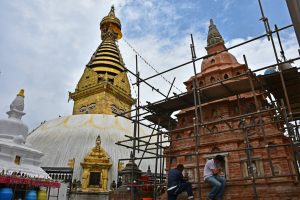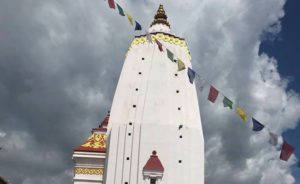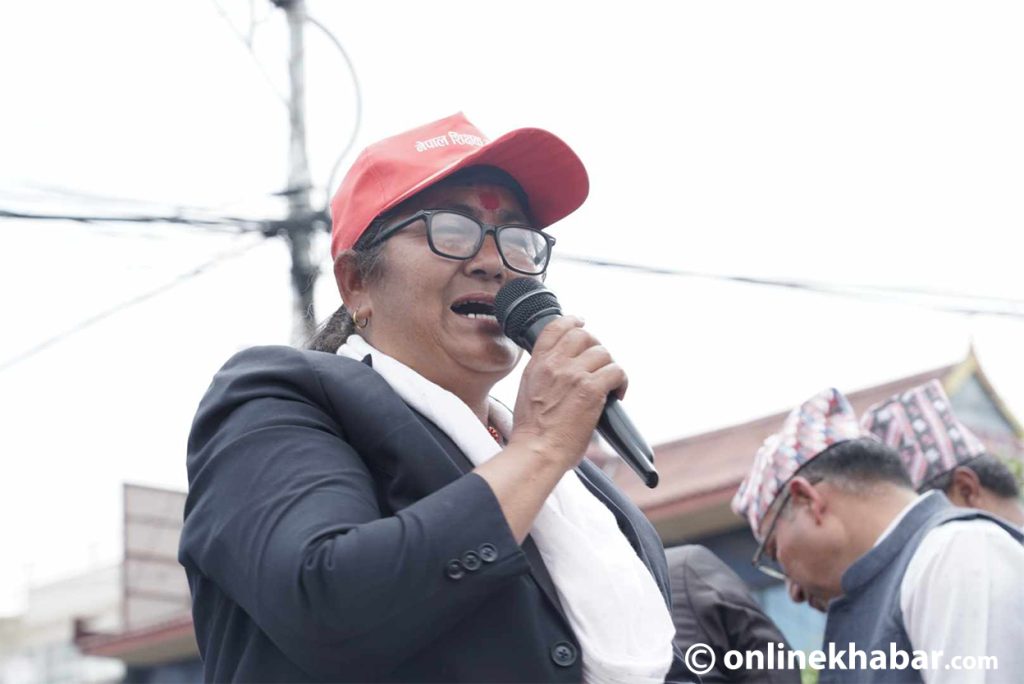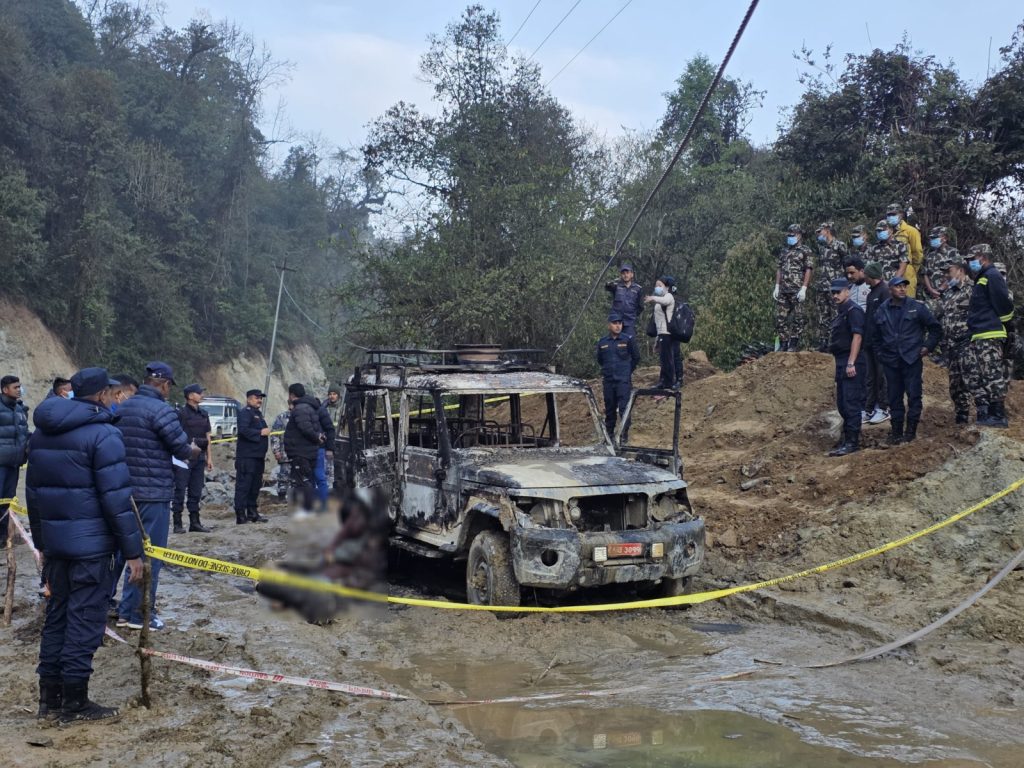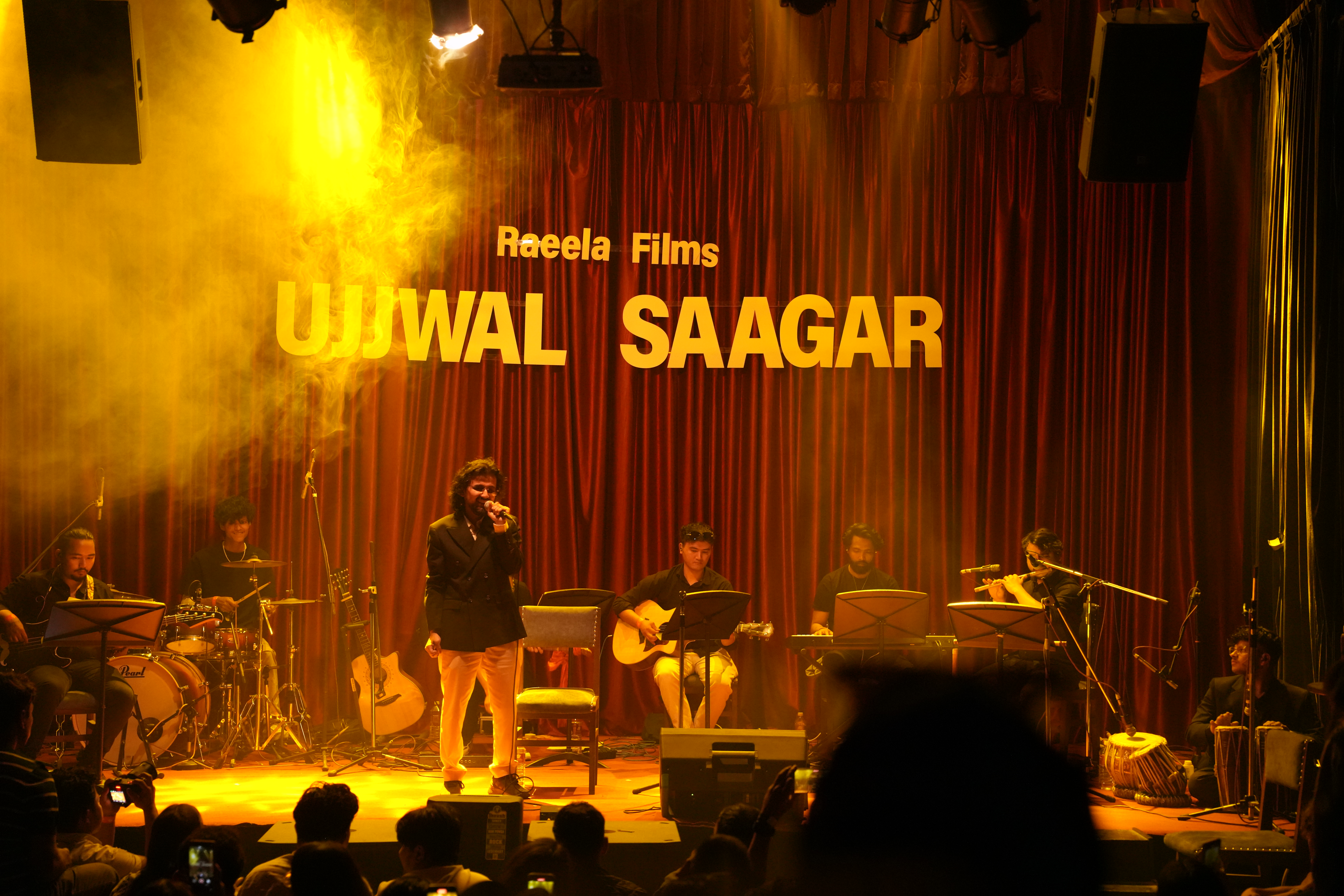
Legend has it that Swayambhu emerged out of a lotus flower that bloomed in the middle of the ancient lake that covered the Kathmandu Valley before settlers came in. Today, the stupa has become one of the must-go places for not just tourists, but for anyone interested in the history and culture of Kathmandu.
Although there are many Buddhist pilgrimage sites in Nepal, the stupa located on the west of Kathmandu holds a special place in the hearts of the followers of the ancient religion. For the tourists, it is fondly called the Monkey Temple– the hill is home to rhesus monkeys.
The temple is set on a serene hill and there are 365 steps, one for each day in the year, that lead you up the hill.
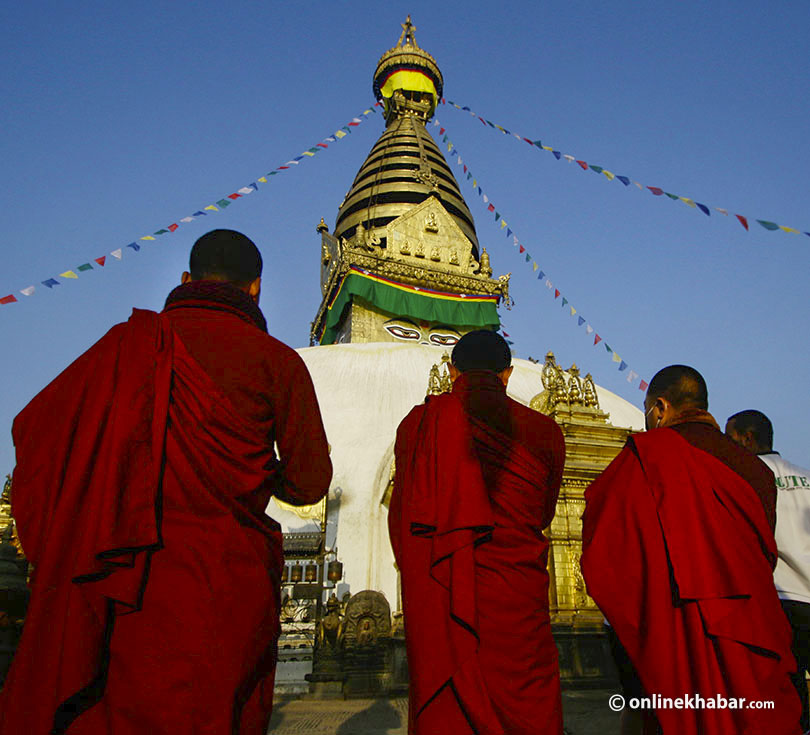
The largest image of the Shakyamuni Buddha in Nepal sits on a pedestal on the western part of Swayambhu. Behind the hilltop is a temple dedicated to Manjushree or Saraswati–the goddess of learning. Chaityas, statues and shrines of Buddhist and Hindu deities fill the stupa complex. The base of the hill is almost entirely surrounded by prayer wheels that were recently installed. Devotees can be seen circumambulating the stupa at all times.
As I take the first of the 365 steps towards the 2,000-years-old stupa I feel at peace. Maybe it’s the woods that surround the stupa or the pacifying chants of ‘om mani padme hum’, the stupa located atop a small hill gives a positive and peaceful vibe. As I sit admiring the stupa feeding the monkeys, an old man walks up to me and tells me about this ancient monument.
All the heritage sites in Kathmandu have a story, so does Swayambhunath. He points to the top of Buddha’s eye, the quintessential symbol of our country, and tells me how there is a spire of 13 golden disks that represent the ladder to enlightenment. Those famous Buddha eyes gazing from the tower are those of the all-seeing Primordial Buddha.
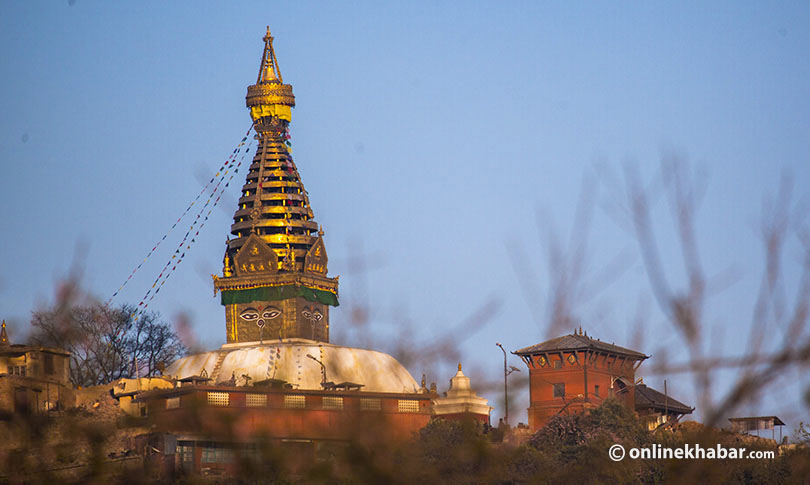
If you look carefully, you will notice the gold plaques rising above the eyes like a crown. It is believed that they depict the five Dhyani Buddhas, celestial Buddhas who are associated with the five senses, the four cardinal directions plus the centre, and many other symbolic groups of five. The five Dhyani Buddhas are further honoured with special shrines at the base of the stupa. They face the four cardinal directions, plus one slightly left of east to represent the centre direction. Between them are shrines to four of the Buddhas’ consorts.
Linking all nine shrines together is a chain of prayer wheels and butter lamps. The five main shrines are enclosed in beautiful gilded copper work, for which the Kathmandu Valley is renowned.
At the base, there is a ring of small Tibetan prayer wheels surrounding the dome. Many pilgrims, as well as visitors, walk countless rounds around the dome in a clockwise direction, chanting prayers and spinning the wheels to send their prayers and chants to the heaven.

This is a good place to catch panoramic views of the city. The site itself has stood as a hallmark of faith and harmony for centuries.
The two main festivals celebrated at Swayambhunath are Buddha Jayanti (in April or May) and Lhosar (in February or March). During these times, many pilgrims visit the temple and the monks create a lotus pattern on the stupa with saffron-coloured paint. Also important is the month-long Gunla celebration (August or September) marking the end of the rainy season.






